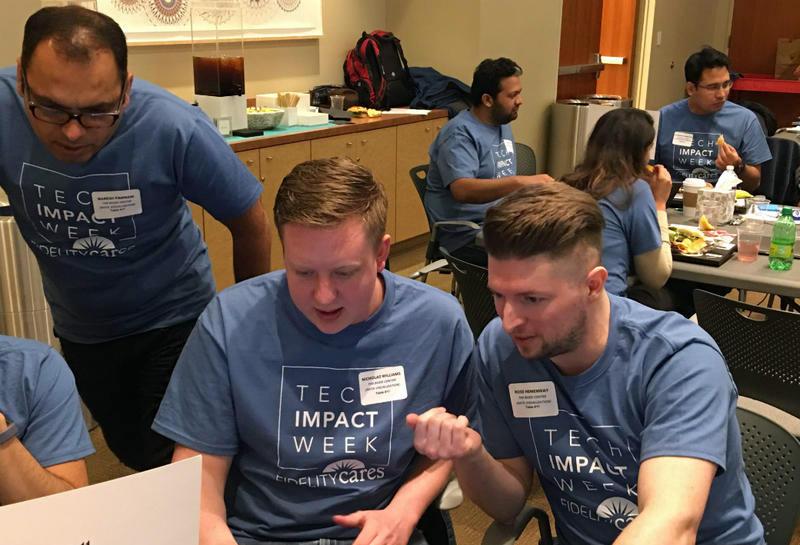As the Education World Relies More on Data, Nonprofits Need Help With the Numbers
By Bill Zeeble

Audio File
Originally published on KERA News
The education world is dense with data. And all those numbers can be numbing, especially for nonprofits trying to make a difference.
One day each year, Fidelity Investments invites those groups to its complex near Grapevine Lake to help make sense of it all.
Data overload
A hundred or so people fill a big room on Fidelity’s sprawling, 5,400-person campus in Westlake. They’re all here to untangle mounds of confusing data that keeps piling up.
One example: Regina Nippert says students are being studied to death.
“Urban kids are,” says Nippert, who pauses, then restarts. “Somebody’s looking at them all the time. And so the school districts have begun to say, ‘Exactly how does this benefit the district?’”
Nippert heads Southern Methodist University’s Budd Center, which works with 32 nonprofits and 15 schools in West Dallas. One of the poorest parts of town has statistics on everything from student test scores and tardiness to income and race.
“We get the data,” Nippert says, “but then there’s this huge thing — I mean literally, we’re spending 50 hours every six weeks to take this data [and] crunch it back down.”
Janice MacDonald, a vice president at Fidelity, chimes in: “It’s so much that a single human being can no longer digest it alone.”
MacDonald helps connect organizations like the Budd Center to her company’s tech staff.
“We have a lot of great information out there that’s available, but consuming these large volumes of data is becoming a challenge,” she says.
That’s where MacDonald’s colleagues come in. Nick Williams has worked in data analysis at Fidelity for four and a half years.
“Our goal is to deliver something by the end of the day,” Williams says. “So with four or five hours, ideally you can keep improving on that, but if we can deliver 80 percent of the functionality in a day, that would be a pretty good goal for us.”
"Without the data, we do not know if our work is truly making a difference to that child."
Measuring impact
That’s a huge goal for Lisa Dickerson. She’s with a Budd Center partner called Readers 2 Leaders. She doesn’t have the people and tools to consistently turn the reams of information into something usable.
“We already have the data that comes in a spreadsheet with hundreds of columns and rows,” Dickerson says. “And it is very hard to read and understand. Without the data, we do not know if our work is truly making a difference to that child.”
Fidelity, of course, is all about numbers. The people here use more sophisticated spreadsheet tools than just Excel, and they have more ways to turn data into understandable images and graphs.
Fidelity’s Naresh Pamnani heads the visuals team working with the Budd Center.
“It’s like a picture is worth more than one thousand words, so we are the ones here creating the picture of it," he says. "The data comes in the format of thousands of reports."
Pamnani’s team helps turn those reports, like attendance data, into meaningful information.
“OK, give me the information of ‘what are the monthly things that hit me’ or ‘what are the students who are not attending at the level of less than 60 percent,’ right?” Pamnani says. “So how can we impact that performance, so then you’ll make decisions on it.”
The Budd Center’s Nippert says using that kind of attendance information has paid off in the past, when it took much longer to crunch numbers.
“There was one particular semester where we noticed attendance had taken a steep dive," Nippert recalls. "We brought that to the attention of our nonprofit partners. We talked about some interventions they could do together, which is a really important piece — that relational piece. They did the interventions. The next time we measured attendance, it was back to normal again.”
Now, thanks to this day of intense tech help, Nippert’s looking forward to faster returns to normal, so kids can stay on track for success in school.
Learn more about Tech Impact Week, hosted by Common Impact and Fidelity Investments.

